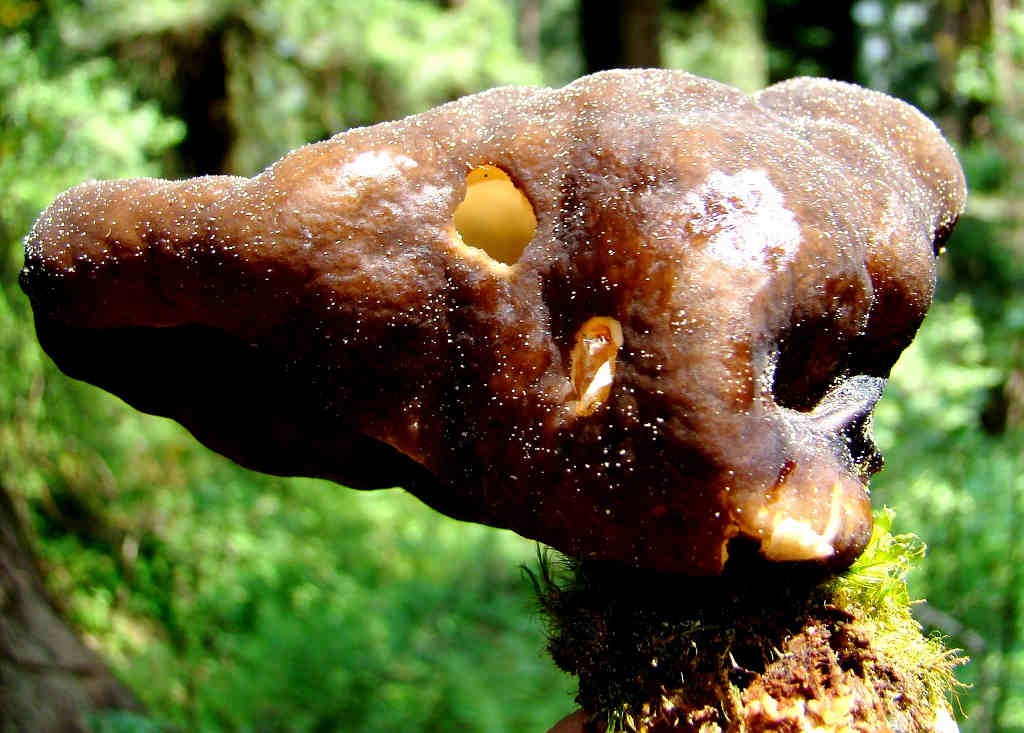
Phellinus spp
Phellinus spp. is a genus of wood-decaying fungi that plays a fundamental role in forest ecosystems across the Great Himalayan National Park (GHNP). These fungi are particularly noted for their capacity to decompose lignin in wood through a process called white rot, breaking down tough organic compounds and recycling nutrients back into the soil. They are easily recognized by their perennial, woody, and often hoof-shaped fruiting bodies, which are typically found on dead logs, branches, and sometimes living trees.
In GHNP, Phellinus species are frequently found in temperate broadleaf and mixed conifer forests, where they colonize a variety of tree species including oak (Quercus spp.), fir (Abies spp.), and deodar (Cedrus deodara). The cool, moist, and shaded environment of these mid to high-altitude forests provides the ideal microclimate for their growth. These fungi are slow-growing but long-lived, often persisting on the same tree for many years and contributing to the park’s rich biodiversity.
Their ecological role cannot be overstated. As primary decomposers, Phellinus spp. break down complex organic materials that few other organisms can, facilitating the nutrient cycling process that sustains forest growth. This action not only enriches the soil but also supports the regeneration of flora and provides important microhabitats for insects, mosses, and even other fungi.
In addition to their ecological importance, certain Phellinus species have drawn attention in ethnomycology and modern research for their potential medicinal properties. In traditional Asian medicine, extracts from these fungi are believed to possess anti-inflammatory, anti-tumor, and immune-modulating properties. Though not commonly used in traditional Himalayan herbal medicine, there is growing interest in the therapeutic potential of species such as Phellinus linteus, which is being studied for its bioactive compounds.
The presence of Phellinus fungi in GHNP is also considered an indicator of forest health. Their dependence on mature and decaying trees means their abundance reflects minimal human disturbance and a thriving old-growth ecosystem. As such, their conservation indirectly supports broader biodiversity goals within the park.
Conclusion
Phellinus spp. serves as a cornerstone of the forest ecosystem in the Great Himalayan National Park. By breaking down deadwood and returning nutrients to the environment, they support the health and longevity of forest habitats. Their ecological importance, potential medicinal uses, and role as bioindicators make them invaluable to both scientists and conservationists. Protecting these fungi, and the mature forests they inhabit, is vital to preserving the integrity and resilience of GHNP’s unique and fragile ecosystem.



